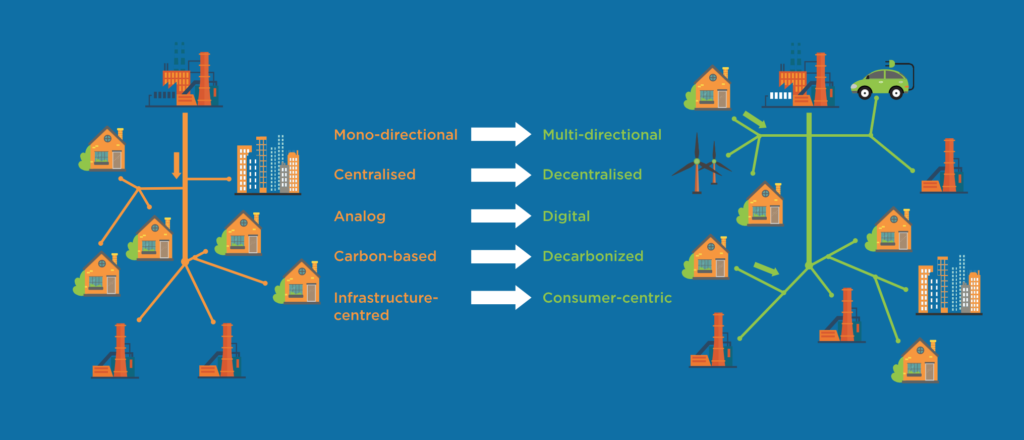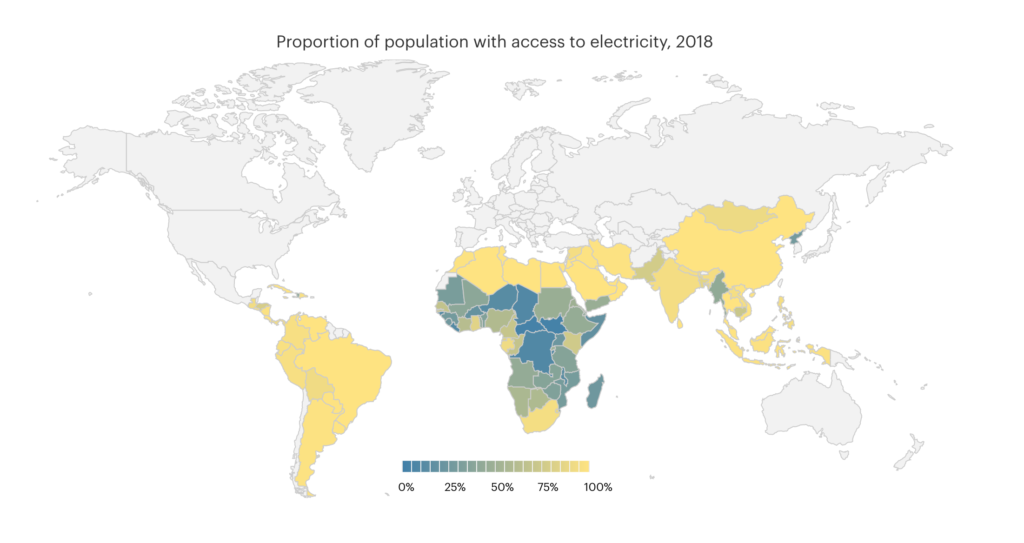Energy is an enabler for all other societal goals and a key to reaching them sustainably. Providing affordable and clean energy is therefore one of the main sustainable development goals and has led to new approaches in supplying energy to those most in need. According to the IEA, providing universal access to energy by 2030 would require $52 billion dollars in additional annual investments, which amounts to twice what is being mobilized under current policies. In particular, of that additional investment 95% must be directed towards sub-Saharan Africa.
Mini-grids are consolidating their reputation as an effective system with which to bring energy to remote areas. What is more, research indicates that bringing universal energy access can be achieved without an increase in net global greenhouse gas emissions, particularly as mini-grid systems are often led by renewable energy provision with photovoltaics and wind energy.
Transforming the grid system
Global energy markets are undergoing a transformation, shifting from centralized systems that have characterized modern development, to dynamic multidirectional systems with an increasing diversity of fuels and ownership. From the original vision of Edison, that saw the potential behind serving customers with on-site power generation with a series of micro-grids, the last hundred years have been accompanied by a “bigger is better” mentality that has led to ever-larger grid systems that centralize the distribution of energy managing electricity supply and voltage for large areas of population.
Increasingly, however, micro-grids have started to gain in popularity, by providing an interactive and functional relationship between the central grid and its users. Micro-grids can connect to and use the services of the central grid, whilst also supporting services to the grid when it’s beneficial to do so. They also provide a more resilient system as they are able to island off from the grid and can be deployed on different scales: from a single building to an entire municipality.

However, particularly in development contexts, it isn’t always easy to connect to the central grid, often due to a lack of infrastructure. In these cases, mini-grid or off-grid solutions are proving to be the talk of the town and featuring heavily in development plans that aim to provide universal energy access. In fact, mini-grids do not require a connection to the larger macro-grid and in emerging energy economies they are proving to be one of the most beneficial solutions to electrification. Although mini-grids can run on anything from diesel to solar and wind, their implementation has gone hand in hand with the development of renewable energy capacity, providing clean energy and energy independence.
Since large scale on-grid energy production can be less cost effective for providing access in rural areas, mini-grid and off-grid renewable energy systems are essential to achieving universal access by 2030 in the most cost- and time-efficient manner.
SDG7 and clean energy development
Although the role of mini-grids is currently limited it is expected to increase as development agencies and a number of private-investor led initiatives are realizing their potential to provide electricity for both productive, commercial and household activities.
According to the IEA, 2018 saw a record low of 860 million people worldwide without access to electricity. Yet the nature of this progress has been unbalanced, with the majority of new energy access being concentrated in Asia. In contrast, the African continent is lagging behind and efforts need to increase to achieve the “universal energy access by 2030” sustainable development goal.

Through the use of detailed geospatial modeling, the IEA has also been able to establish that “solar photovoltaic in off-grid systems and mini-grids, are the least-cost solution for three-quarters of the additional connections needed in sub-Saharan Africa.” This means that, not only are decentralized grids the most cost-effective solution, but they also go hand in hand with renewable energy development.
Therefore, achieving universal energy access by 2030 will not mean increasing overall net greenhouse gas emissions. This is because providing universal energy access will only increase global energy demand by a meager 0.2% (37 million tonnes of oil equivalent) and “the corresponding rise in carbon dioxide (CO2) emissions of around 0.2% in 2030 is more than offset as reducing the biomass used for cooking provides a net reduction in greenhouse-gas emissions, which would save the equivalent of around 165 Mt of carbon-dioxide equivalent from methane and nitrous oxide.”






